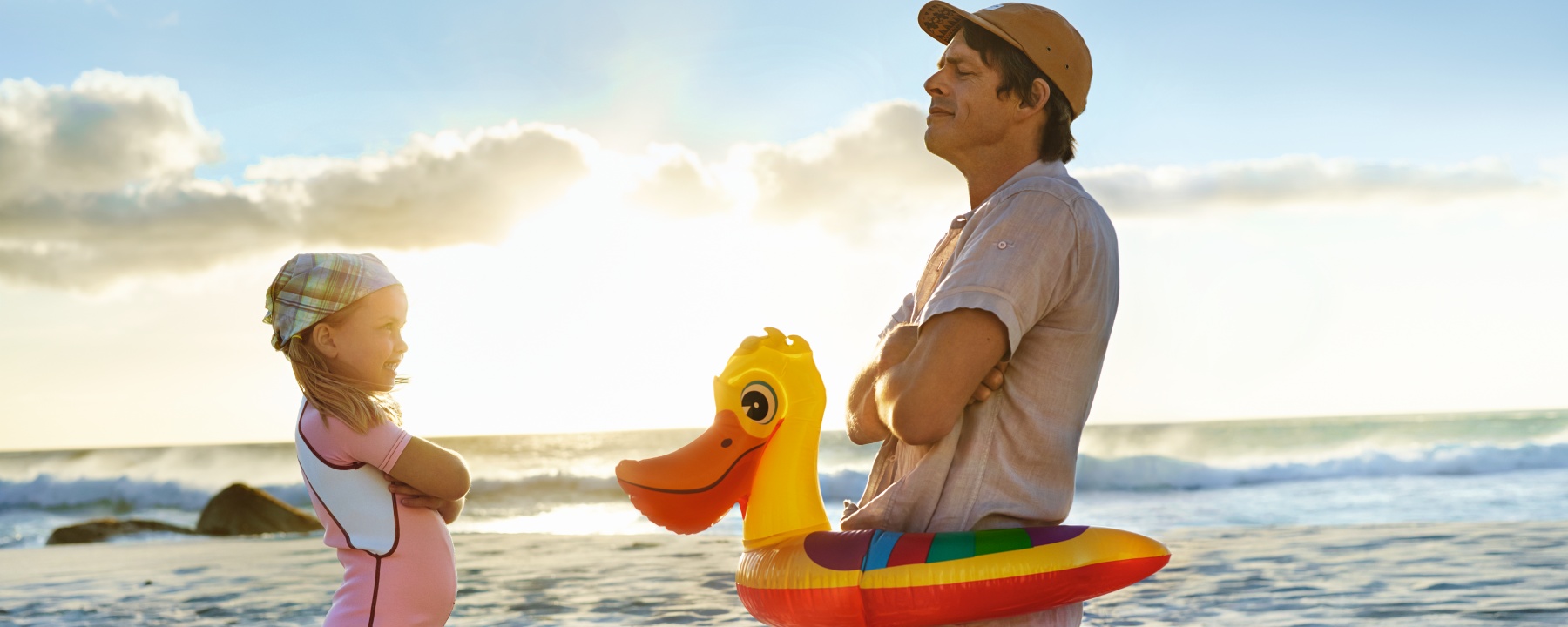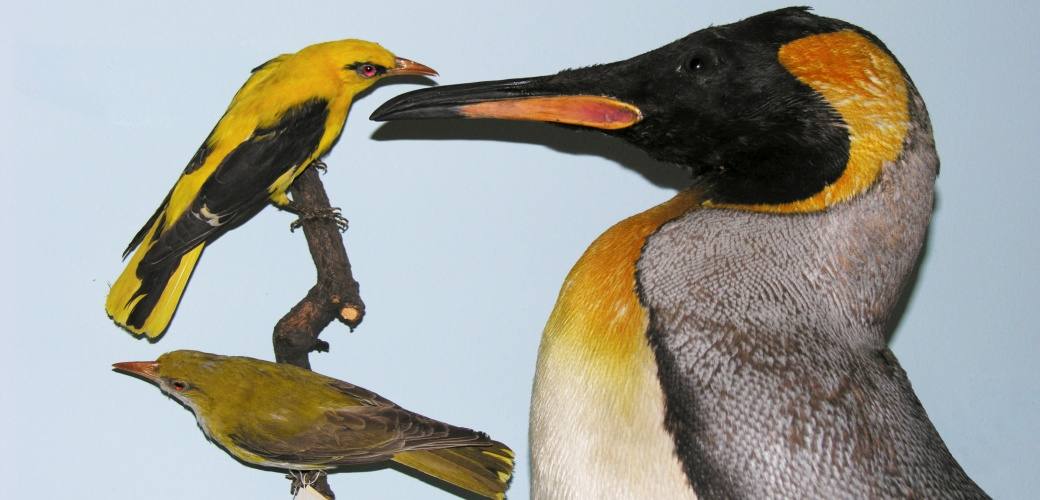
Sun protection
UV protection for animals
When we made our first attempt to write about sunscreen for animals, we instead became waylaid by the fact that birds can see and perceive UV rays. Now, though, we want to return to the topic at hand and ask the question: How do animals protect themselves from the sun’s rays?
First of all: Animals aren't newcomers to the topic of sun protection. In general, it can be said that animals are very good at handling the heat emitted by that burning celestial body. If it is too hot, they reduce their movements, look for shade to lie in, and drink a lot. In many cases, sun protection is also heat protection.
It’s easy to guess how birds – large or small –protect themselves from the sun. Like clothing for people, their plumage protects against dangerous UV rays. “Feathers give birds sufficient protection against harmful UV radiation,” explains Dr. Peter Mullen, ornithologist and owner of Sunbird Images, in discussing how a plumage works. The feathers are made of keratin, meaning they are dead tissue – similar to human hair or calluses. As birds are usually almost completely covered by feathers, the sun cannot inflict any damage. Even the eyes of birds are protected, with the ornithologist describing it as follows: “There are small oil globules on the retinal cones that prevent UV rays from penetrating and causing damage.”
Corals are particularly susceptible to sunlight. These small marine animals cannot escape the sun of their own accord, as they do not move independently. They use algae to protect against UV rays, which remain strong enough to cause damage even under the water's surface at shallow depths. The combination of coral and algae results in a chemical substance that protects against damage. “We believe that the algae living among the coral produce an active ingredient that is transported into the coral and transforms it into a type of sunscreen for both,” says Paul Long from King’s College London.
Personal sunscreen
Researchers and scientists at King’s College London have observed that fish which have these algae in their food chain can also benefit from this substance. Whether this insight can also be leveraged for the benefit of humans is unclear at present and is still being researched. Algae are also a popular sunscreen partner for sea urchins. The sea urchins cover themselves with algae, thereby preventing any UV rays from touching them.
Zebrafish are able to produce their own personal sunscreen: these freshwater fish, a type of carp, produce gadusol in the body. This chemical prevents UV rays from penetrating.
P.S.
One more thing about birds: Storks also have their very own form of heat protection for themselves and their babies. It's called urohidrosis. In plain, slightly unappealing English: they cover their legs with feces, which acts as a cooling mechanism.
Some species do as water fleas do and seek refuge in the deep. They protect themselves by diving into the depths of the water to avoid exposure to excessive UV radiation. Let's stay underwater, or to be more precise, swim to the surface from time to time. Whales – large, imposing animals which appear impervious to everything – are (depending on the species) actually as susceptible to sunburn and skin damage caused by UV rays as anything else. Their protective mechanisms are very similar to those of people, as observed in nature.
If you are wondering why it is possible to get sunburned under water: 40% of the UV rays that strike the earth’s surface still permeate up to 0.5 meters below the water's surface.
To avoid damage, the blue whale, for example, produces more melanin when in warmer climes exposed to more sunlight. Like us humans, the skin color of the blue whale changes and becomes darker. The protective mechanism of the skin gets to work. However, it has been observed that even the skin of the world’s largest mammal first has to adapt to the increased amount of UV rays. In many cases, this leads to sunburn and damage to the animal's DNA.
After the adaptation phase, the damage decreased in the monitored animals. In other words: the more melanin, the greater the protection. When the blue whale is in temperate waters, the melanin content in its body is lower, as the sun is not so overpowering.
Repair genes
For sperm whales, it is more about follow-up than preventive care. Although this species has a higher melanin content and darker skin than the blue whale, sperm whales still have to react to damage despite their higher level of self-protection.
Sperm whales spend more time on the surface of the water. Their intervals between diving and a relaxed state of swimming are much longer. This high UV exposure inevitably leads to skin damage. To "reverse" this damage, sperm whales have repair genes that allow the damaged skin to regenerate and recover as quickly as possible.
The skin of a fin whale is comparable to that of us humans. It is probably in the skin type category 5-6, i.e., dark-skinned with extremely high levels of melanin. The risk of a fin whale becoming sunburned is many times lower than in light-skinned creatures. They do not have to adapt much either, as they are primarily found in tropical waters and are accustomed to the power of the sun.
A relationship to the conservation of species
It’s important to know that even animals have to protect themselves from the sun. Yet, there is another theme in wildlife that is much more exciting than protection from UV radiation, even if the latter plays the main role.
More informationNow let us return briefly to the earth’s surface. We’ve all seen footage of elephants at the zoo or on television using their trunks to blow sand and dirt onto their backs. This protects their thick hides from sunburn. A cool bath in the pool or river provides the additional cooling that they need during the hot season.
It looks like blood
Let’s take the hippo as another example. It secretes a liquid that protects against UV radiation. The substance's reddish color could lead you to think that the thick hide of the hippo, one of the most dangerous animal species, is bleeding. Since this is essentially a type of mucus with two different pigments, it offers UV protection, and also functions as an antibiotic, which can prevent wounds from becoming infected. After some time, the “blood” becomes a kind of firm brown mass on the surface of the skin. It's another way to avoid sunburn.
This was our little detour into the world of animals. Sun protection is important in the animal kingdom, too. Perhaps next time you see an elephant covered in dirt at the zoo, you'll remember you forgot your sunscreen. Even so: We hope sun protection will become part of your daily routine. Your skin will thank you for it.

